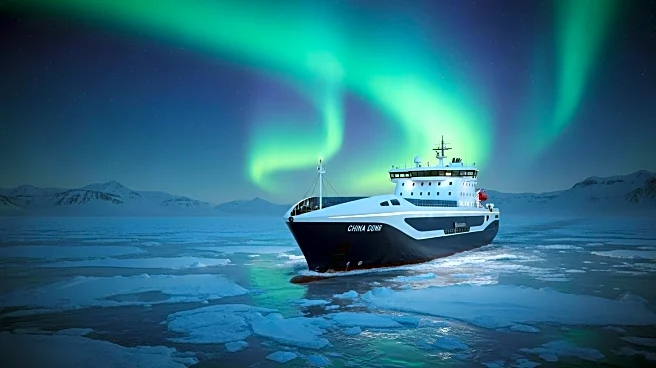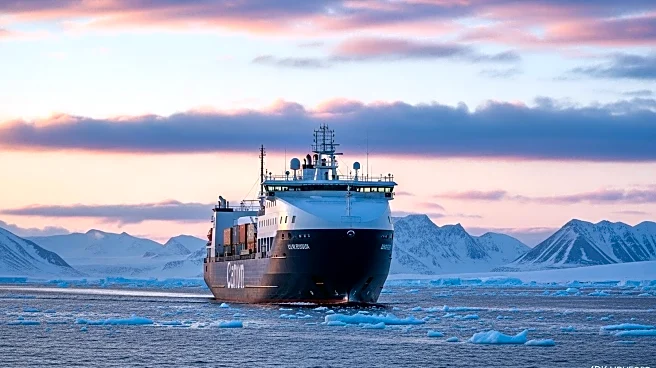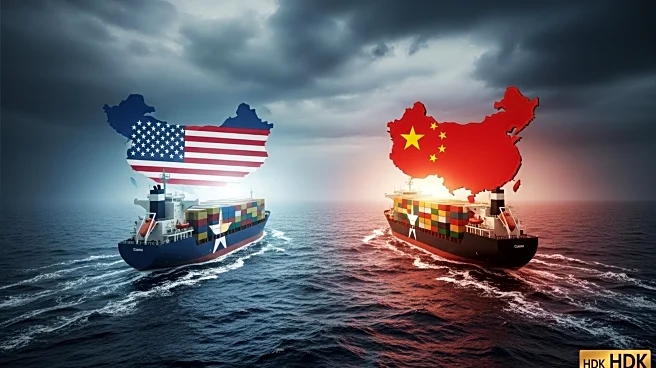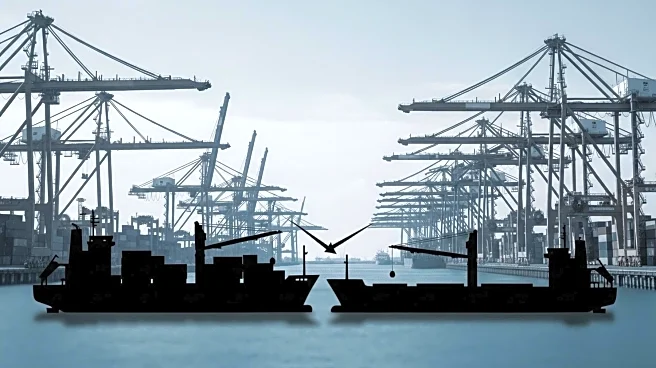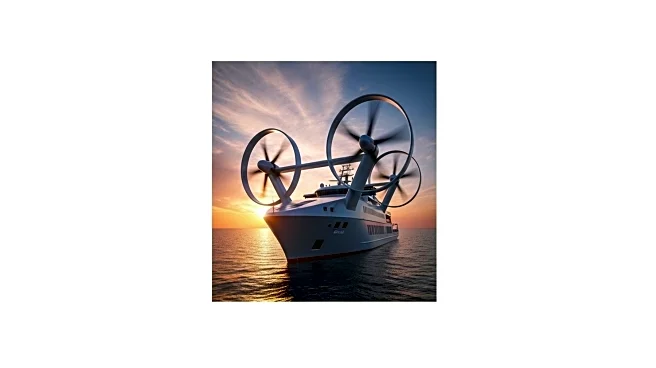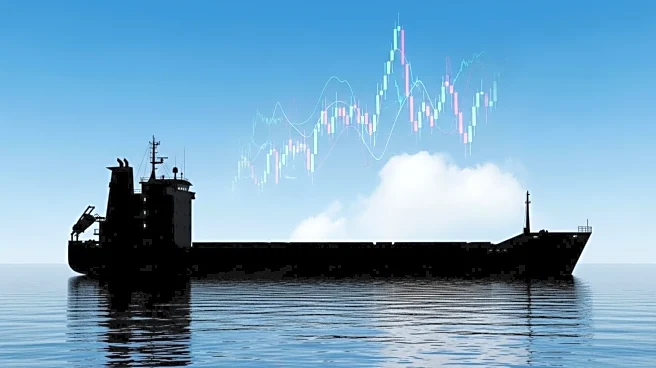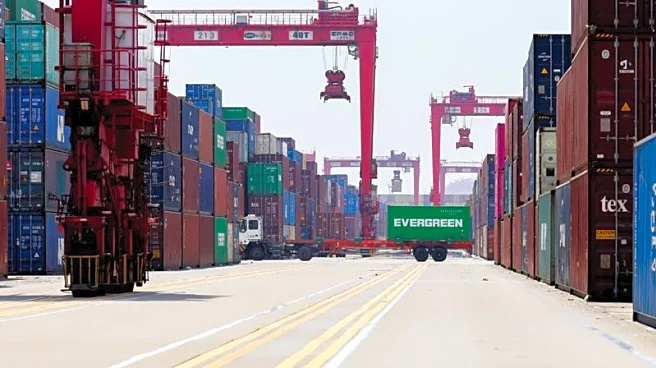What's Happening?
Drewry Maritime Research has identified a growing disconnect between freight rates and charter markets in the container shipping industry. Despite falling spot freight rates, charter rates have continued to rise, currently standing at approximately 200% above 2019 levels. This trend is attributed to tight vessel availability and long-term charter commitments that do not align with short-term market movements. Major liner operators like MSC and CMA CGM have absorbed significant volumes of second-hand tonnage, reducing the fleet available to non-operating owners. The liner-owned fleet share has increased from 54% in late 2019 to 64% in early October 2025, limiting market liquidity and strengthening owners' pricing power. Geopolitical disruptions, such as insecurity in the Red Sea, have led to longer voyage times as carriers reroute ships via the Cape of Good Hope, further reducing vessel availability and increasing demand for chartered ships.
Why It's Important?
The sustained growth in charter rates, despite declining freight rates, highlights a structural shift in the container shipping industry. This shift has implications for market liquidity and pricing power, affecting both liner operators and non-operating owners. The increased interest in fuel-efficient and environmentally compliant vessels, driven by emissions-related regulations, has created a scarcity premium for compliant tonnage. As demand growth slows and newbuilds enter the market, a correction in charter rates is anticipated. This correction could impact profit margins and operational strategies for shipping companies, influencing global trade dynamics and logistics planning.
What's Next?
Drewry forecasts incremental year-on-year charter rate improvements for most vessel size ranges up to 8,500 TEU in 2026, while average global freight rates are expected to decline by about 16%. A correction in the charter market is expected as demand growth slows, profit margins narrow, and newbuilds enter the market. Additionally, the potential resumption of Suez Canal transits could further influence market dynamics. Shipping companies may need to adjust their strategies to navigate these changes, focusing on fleet management and charter agreements to maintain service reliability and hedge against future volatility.
Beyond the Headlines
The divergence between freight rates and charter markets underscores the complexity of the shipping industry, where geopolitical factors and environmental regulations play significant roles. The emphasis on fuel-efficient and compliant vessels reflects broader industry trends towards sustainability and regulatory compliance. This focus on environmental standards may drive innovation in ship design and operational practices, influencing long-term industry shifts.


